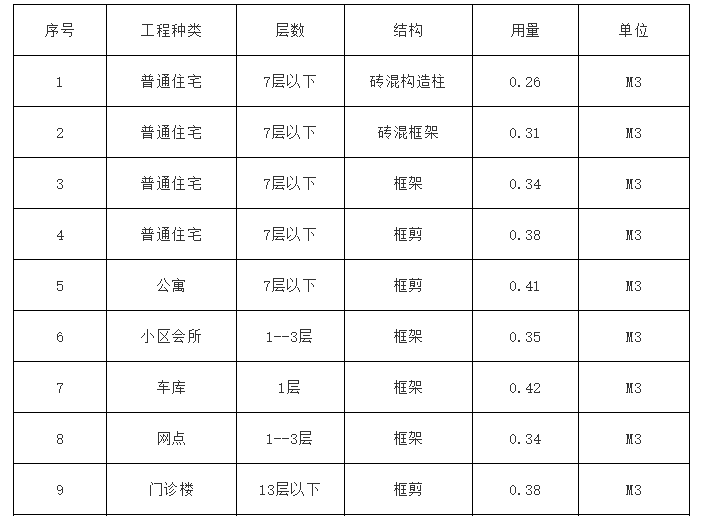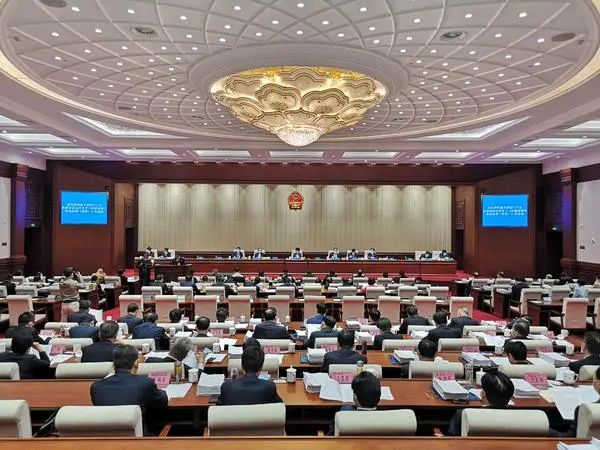Source: Civil Engineering Forum, Shanghai construction site
. 
1
. 
What should we do when the raw materials can not be stopped immediately and the concrete supply can not be interrupted? At the same time of contacting the raw material suppliers, special personnel should be assigned to control the mixing water consumption and the on-site concrete curing monitoring, so as to prevent the water from being added on site
.
If necessary, the water binder ratio should be kept unchanged and the amount of cement should be increased to increase the fluidity of concrete
.
Generally, 1.5% ~ 2.5% of cement slurry volume is needed for every 1 m3 of concrete when the slump is increased by 1 cm
.
2
.
What kind of fly ash can be used in ready mixed concrete? According to the fineness, water demand ratio and carbon content of fly ash, it can be divided into grade I, grade II and grade III
.
grade I and grade II fly ash can be used in ready mixed concrete
.
3
.
Under what circumstances should fly ash not be used? In winter construction, especially at – 10 ℃ and below, due to the low early strength of fly ash concrete, it needs a long time to pre cure at positive temperature to reach the critical strength of frost resistance, and the construction site has poor thermal insulation, so it is easy to be frozen, so it is not suitable to mix fly ash
.
In addition, fly ash is not allowed to be added to the concrete ground which is polished with compaction and concrete with deicing salt requirements
.
4
.
Can fly ash concrete extend the acceptance period? Yes, as the addition of fly ash contributes to the later strength of concrete, China’s technical code for application of fly ash concrete (gbj146) stipulates the age of design strength grade of fly ash concrete
.
It should be 28 days for above ground works, 28 days or 60 days for surface works, 60 days or 90 days for underground works and 60 days or 180 days for mass concrete
.
5
.
Under what conditions is silica fume used? Silica fume is mainly used to prepare high-strength concrete, sulfate resistant concrete, chloride corrosion resistant concrete, underwater concrete, deicing salt concrete and high wear-resistant pavement concrete
.
Shiaiken silica fume is widely used in China, and its price is about 3000 yuan / T
.
6
.
When to use zeolite powder? Zeolite powder can be used as active admixture of cement
.
Zeolite powder can replace part of the cement in concrete and improve the water holding capacity of concrete, especially when polycarboxylate superplasticizer is used to prepare large flow and ultra-high strength concrete, adding zeolite powder in an appropriate amount can effectively improve the water holding capacity of concrete and prevent concrete bleeding
.
When the lightweight aggregate concrete is prepared, because its addition will increase the structural viscosity of cement slurry, the floating problem of lightweight aggregate in the vibration molding can be greatly improved
.
Zeolite powder concrete is also suitable for underwater concrete and concrete cured in underground humid environment, with good frost resistance and impermeability
.
When using zeolite powder to prepare high performance concrete, it is better to replace 10% of cement
.
7
.
Sometimes when the concrete produced by naphthalene superplasticizer is removed, there are many bubbles on the concrete surface
.
What is the reason? What should we do? Some additives manufacturers purchase cheap crude (normal appearance color is white and yellow, and impurity content color is pink and red brick) and mixed raw materials
.
These chemical composition of impure Nai, high content of phenol, low purity, will bring a lot of bubbles in superplasticizer (poor Nai will bring 3% bubbles in concrete), and the bubbles are large, defoaming time is long, directly affect the strength of concrete
.
At this time, contact the admixture factory in time to suspend the use, in order to prevent affecting the concrete strength
.
8
.
How to detect the air content of water reducer? In addition to determining the air content of concrete by the air content meter to infer the air content of admixtures, the following methods can also be used to test
.
Take 100ml with a plug colorimeter tube, add 4 grams of powder sample, add water to 40ml, record the vertical height of solution (H0) with a steel ruler, hold the color stopper tightly with your hands, shake 20 times vigorously, immediately use stopwatch timer, and measure the top height of the foam (H1) until the liquid foam disappears and record the time (s) when the liquid level is exposed
.
Control index: foaming height ≤ 45mm, defoaming time ≤ 50s
.
9
.
What should be paid attention to when using air entraining agent? First of all, it is necessary to control the air entrainment, generally 2% – 4% (volume content) is appropriate, otherwise, the strength of concrete will be reduced
.
In addition, inferior air entraining agents with poor quality, large bubble diameter and spacing, such as sodium dodecyl sulfonate, calcium lignosulfonate, etc., should not be selected
.
The concrete strength will be greatly reduced if the dosage is small
.
Before use, we should determine which variety to use and how much to mix through experiments
.
10
.
What is the effect of long waiting time on the quality of concrete? The retarder is added into the concrete, but its retarding time is limited
.
After more than 2 hours, the cement begins to hydration, the slump also begins to decline, and the concrete strength will lose part
.
Some enterprises have done this test, the test results show that the concrete strength begins to decline when the waiting time is more than 2 hours
.
Therefore, the waiting time of concrete on site should not exceed 2 hours
.
11
.
What are the consequences of adding water to a concrete truck? The normal water binder ratio of concrete ensures that it has a certain fluidity and strength
.
In addition, after adding water, the concrete strength will be reduced (the excess water evaporates to form voids and weaken the concrete section)
.
According to the test data of some concrete enterprises, the 28 day strength of concrete will be reduced by 3.7MPa for every 10kg of water added
.
Therefore, it is necessary to strictly control the construction site and do not add water to the transport vehicle
.
12
.
Due to various reasons, concrete to the site slump is very small, difficult to pump how to do? Only concrete curing agent can be used for secondary curing
.
At present, the majority of concrete use the Nai pumping agent, curing agent is naphthalene superplasticizer, liquid agent, powder can be
.
13
.
How to control the dosage of curing agent? The dosage of curing agent should be adjusted according to the slump of concrete in the transport vehicle
.
When powder is used, it is generally 0.5kg/m3-1kg/m3; when liquid is used, it is 1kg / m3-2kg / m3; after adding, the tank can be vulcanized after 1-2 minutes
.
14
.
Due to various unforeseen reasons, the concrete is not pumped in time after the first vulcanization, and the slump of concrete has dropped
.
What should we do? It has been proved by many tests that the concrete can be vulcanized repeatedly
.
As long as it does not add water and stays for less than 2 hours at room temperature, its strength will not decrease
.
15
.
Why not use pumping agent as curing agent? Because there will be components of retarding agent and air entraining agent in the pumping agent, it may cause retarding or strength reduction of concrete when it is added into concrete
.
16
.
How long is the initial and final setting time after concrete pouring? How to judge? The initial setting time of concrete under normal temperature is 6-8 hours, and the initial setting time is when the surface of concrete is pressed lightly without sticking hands, and there is a layer of shiny film on the surface of concrete; when the surface of concrete turns white, the final setting time is about 8-10 hours, and the initial and final setting time will be shortened or extended depending on the temperature in summer and winter
.
17
.
What is early strength concrete? Ordinary concrete will reach 70% of the design strength in 7 days and 100% in 28 days at room temperature
.
Due to the need of construction progress or formwork turnover, measures are taken to make the concrete reach the design strength in 15 days at room temperature, that is, early strength concrete
.
18
.
What is super early strength concrete? Under normal temperature, the concrete that can make the concrete reach the design strength in about 7 days is called super early concrete
.
19
.
How to prepare super early strength concrete? Generally, it can be prepared with super early strength pumping agent, two concrete strength grades or po42.5r cement
.
20
.
What should be paid attention to in mix proportion design of mass concrete? In order to prevent the structural cracks caused by the temperature difference between the inside and outside of the mass concrete exceeding 25 ℃, the following points should be paid attention to in the mix design: control the amount of cement and select the cement with low hydration heat and slow setting time
.
Such as dam cement, slag Portland cement, fly ash Portland cement, etc
.
Fly ash and ground mineral powder should be used to reduce the hydration heat of concrete.
.



